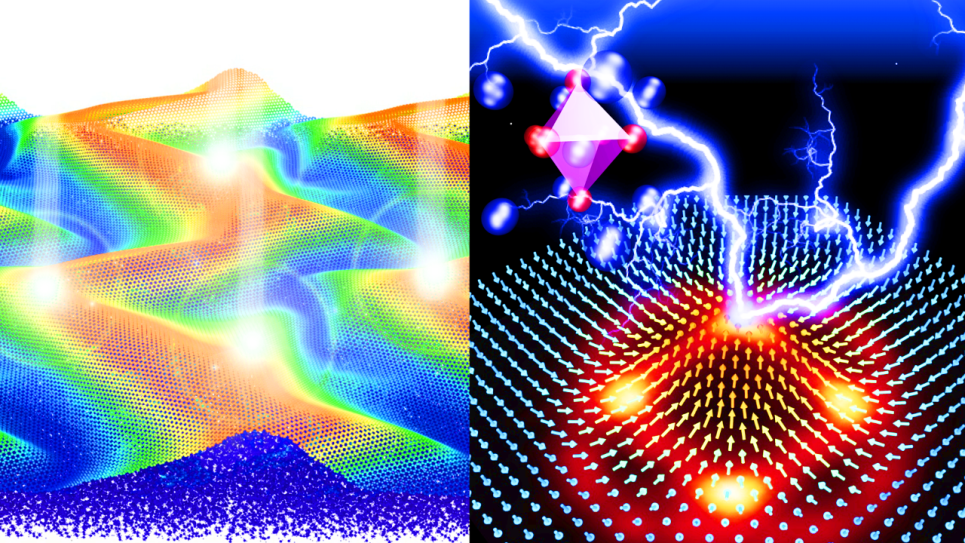
(Left) Self-assembled quantum emitter array in atomically thin metastructures. (Right) Topological switching in ferroelectrics. Image: Thomas Linker, Anikeya Aditya, and Ken-ichi Nomura, University of Southern California.
The work in this INCITE project , directly validated byXFEL, UED and neutron experiments at DOE facilities, will enable future production of high-quality custom quantum material architectures for broad and critical applications to continued U.S. leadership in technology development, thereby addressing DOE Basic Research Needs for Transformative Manufacturing and Quantum Materials.
This project will boost scalable manufacturing of quantum materials and ultrafast control of their emergent properties on demand using AI-guided exascale quantum dynamics simulations. In particular, these efforts will focus on the self-assembly of layered material (LM) metastructures (i.e., atomically thin origami) for scalable and robust manufacturing of quantum emitters for future quantum information science and technology, as well as picosecond optical, electrical, and mechanical control of symmetry breaking in topological ferroelectric skyrmion, skyrmionium and meron for emerging ultralow-power polar “topotronics.”
Hundred-thousand-atom nonadiabatic quantum molecular dynamics and billion-atom reactive molecular dynamics and excited-state neural-network quantum molecular dynamics simulations will significantly extend the scope of prototype Aurora Early Science Programsimulations to a richer set of quantum material applications for LM quantum emitters and polar topotronics.
The simulations performed will not only mirror far-from-equilibrium electronic and lattice dynamics in x-ray free-electron laser (XFEL) and ultrafast electron diffraction (UED) experiments at the Stanford Linac Coherent Light Source at exactly the same space and time scales, but will also provide a fundamental understanding of their structural transition pathways and electronic origins.